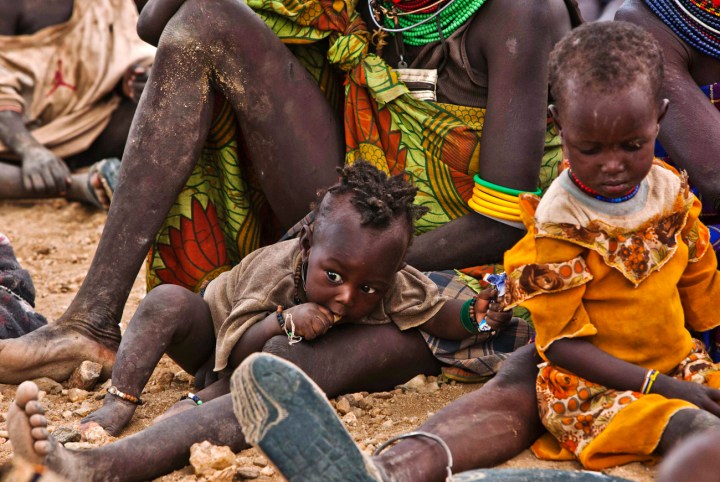Africa
As Somali famine begins to abate, SADC sends food aid to Mogadishu

On Monday the United Nations Food Security Nutrition Analysis Unit lifted its "famine" designation for three regions in Somalia, but there was little to celebrate. The humanitarian situation remains dire. The Southern African response may be late, but it is certainly not in vain. By KHADIJA PATEL.
On Wednesday evening, South Africa began airlifting 264 tons of Southern African Development Community (SADC) member states’ food assistance to Mogadishu via Nairobi. In a statement released by South Africa’s Department of International Relations and Cooperation, spokesman Clayson Monyela said, “Out of concern about the current situation in Somalia, SADC Member States, at the 31st Ordinary SADC Summit of Heads of State and Government in August 2011, passed the ‘Declaration in Solidarity with the People and Government of Somalia on the Famine Situation Affecting the Country’.”
Monyela explains, “The declaration encouraged SADC Member States to assist the Government and People of Somalia affected by the drought in the Horn of Africa. This prompted SADC Member States to adopt Summit Decision 25, in which South Africa offered to airlift SADC contributions from the region to Somalia.”
Although the UN downgraded the famine status in the Bakool, Bay and Lower Shabelle areas of Somalia to the “lesser emergency” phase, the SADC food assistance will not be in vain. If anything, the downgrade proves that food aid has helped to mitigate the threat of famine in these areas.
When it arrives in Mogadishu tomorrow, the SADC food assistance will be distributed by the World Food Programme’s (WFP) local office, and scrutiny now falls on the efficacy of the WFP to adequately distribute the food aid. The al-Shabaab militia, which controls much of Somalia, has of course banned the WFP from areas it controls, but the WFP has partnered with aid agencies who are allowed to work in these areas to distribute aid in al-Shabaab territory.
Speaking to Daily Maverick from Nairobi, a spokeswoman for WFP Susanna Nicol stressed that the successful distribution of food aid in Somalia is still stymied by local conditions. “Somalia is the most challenging environment we work in,” Nicol said. Currently, WFP provides monthly food assistance to 1.2 million people in Somalia but they are “scaling up” to reach 1.9 million people by the end of this year. It is estimated that two million people are still in need of foreign assistance.
Famine still rages in the capital Mogadishu, and other parts of the country and Nicol says poor infrastructure severely hampers aid efforts in the war torn country. The Deyr seasonal rains that recently rescued Somalia from its worst drought in 60 years, has brought with it new challenges. Roads have been rendered dangerous or altogether inaccessible, and medics fear that waterborne diseases like cholera might prove lethal to a population recovering from malnutrition. The rains have also not automatically translated into food. A shortage of grain and staple goods is expected to persist into next year.
The challenges facing aid agencies and WFP are certainly immense but analysts continue to question why this emergency was not prevented – the severe drought and food shortage were predicted late last year. As well as rushing to the aid of the victims of famine, many are still furious with African politicians for not doing more to prevent the crisis.
Slowly, the Africa Union (AU) is waking up to this reality, and on Wednesday, the AU said it supported the Kenyan military operation in Somalia. Former Ghanaian President and the AU Special envoy to Somalia Jerry Rawlings said he was confident the operation against al-Shabaab would succeed.
“We are ready to support Kenya in its efforts and we have no doubt it will succeed. It had been provoked enough and its decision to take action was justified,” he said during a visit to Nairobi.
At the cost of defeating al-Shabaab, the Kenyan incursion into Somalia may however exacerbate the humanitarian situation in the country. The widening conflict threatens to increase internal displacement and hamper the delivery of aid. So far however, Nicol says the Kenyan military operation has not affected aid delivery, which passes through Mogadishu and Afgoye.
The human tragedy unfolding in Somalia has not yet been averted. It is the world’s attention from the war ravaged country that has been diverted. And as donations to Somalia slow down to a trickle, this is one time the bureaucracy of Southern African governments may actually have helped. DM
Read more:
- When feeding the hungry is political in The Economist;
- Somalia’s famine is abating: so why is no one celebrating? In Foreign Policy;
- SA’s stuttering response to Somali famine in Daily Maverick;
- SA’s stuttering response to Somali famine – Government responds in Daily Maverick;
- SA doubles aid to Somalia to R8 million in Daily Maverick.
Photo: REUTERS



















 Become an Insider
Become an Insider